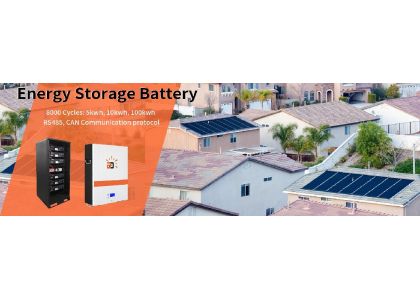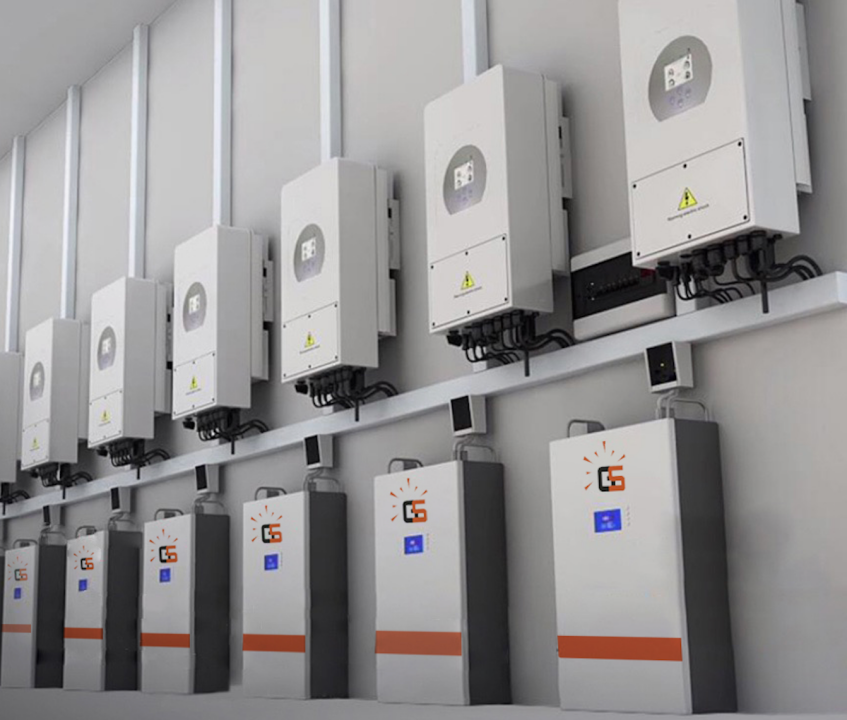GSOK POWER LTD.

According to a survey by GSOK POWER LTD,Skyrocketing energy prices in Europe have not only led to a boom in the distributed rooftop PV market, but have also driven a massive increase in home battery storage systems. SolarPower Europe (SPE) states in its latest report, "European Market Outlook For Residential Battery Storage 2022-2026", In 2021, the European home battery storage market more than doubled to 2.3GWh, with Germany having the largest market share of 59%, adding 1.3GWh of storage capacity, an annual growth rate of 81%, and Italy adding 321MWh in 2021, an annual growth rate of 240%.
The cumulative installed capacity of household battery storage systems in Europe is expected to grow to 9.3GWh by the end of 2022. Under a common scenario, the total installed capacity of home energy storage systems is expected to increase by more than 300% to 32.2 GWh by the end of 2026, with 3.9 million homes owning optical storage systems. In an ideal world, total installed capacity would rise further to 44 GWh, "but it could also fall by a third without the right policy framework".

Energy storage battery is one of the most important core components in home energy storage system. Energy storage batteries have gradually developed from lead-acid batteries, nickel-cadmium batteries to lithium-ion batteries. At present, lithium-ion batteries occupy a very important market position in the field of household energy storage batteries because of their significant characteristics such as small size, light weight and long service life. In the current industrial lithium-ion battery system, according to the positive electrode material, it is divided into ternary lithium battery, lithium manganese acid battery and lithium iron phosphate battery. In terms of safety performance, cycle life and other performance parameters, lithium iron phosphate battery is the mainstream of home energy storage battery. For household lithium iron phosphate battery, its main characteristics include the following:
1. Good safety performance. In the application scenario of household energy storage battery, safety performance is very important. Compared with terpolymer lithium battery, the voltage platform of lithium iron phosphate battery is low, only 3.2V. Meanwhile, the runaway temperature of thermal decomposition of materials is much higher than that of terpolymer lithium battery, which is about 200℃, so it shows relatively good safety performance. At the same time, with the further development of battery pack design technology and battery management technology, there has been enough experience and practical application technology in how to fully manage lithium iron phosphate battery, which promotes the wide application of lithium iron phosphate battery in the field of home energy storage.
2. A good alternative to lead-acid batteries. For a long time in the past, batteries in the field of energy storage and backup power supply were mainly lead-acid batteries, and the corresponding control systems were designed according to the voltage range of lead-acid batteries and became the relevant standards at home and abroad, or a kind of usage habit. Among all lithium-ion battery systems, the output voltage matching between lithium iron phosphate battery and modular lead-acid battery is the best after series. For example, the operating voltage range of 12.8V lithium iron phosphate battery is about 10V--14.6V, while the effective operating voltage range of 12V lead-acid battery is basically between 10.8V--14.4V.
3. long deslin life. At present, in all the industrialization of secondary battery, lithium iron phosphate battery cycle is the longest. According to the number of cycles of a single cell, lead-acid batteries are about 300 times, ternary lithium batteries can reach 1,000 times at present, and lithium iron phosphate batteries can cycle more than 2,000 times. With the upgrading of the technology and the maturity of lithium replenishment technology, the number of cycles of lithium iron phosphate batteries exceeding 5,000 or even 10,000 times is achievable. In the case of home energy storage battery products, although increasing the number of individual cells by series (and possibly parallel) will sacrifice the number of cycles to some extent (other battery systems also exist), However, the optimization of pairing technology, product design, heat dissipation technology and battery balance management technology will make up for the shortcomings of multi-series multi-parallel battery to a large extent and improve the service life